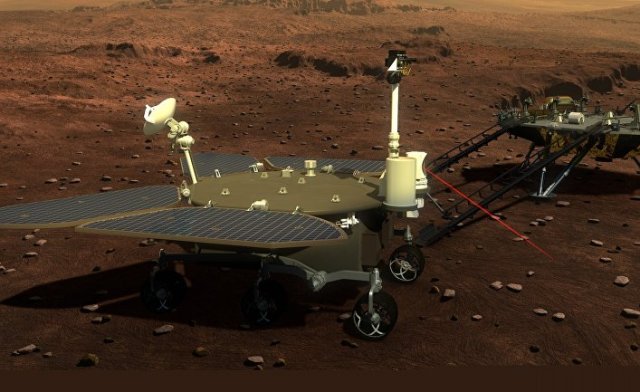After landing the rover, the mission's scientific team analyzed the first images taken and prepared a list of the most interesting terrain details.
TASS, December 6. The scientific team of the Zhuzhong rover has published a detailed map of the rover's landing zone on the Utopia Plain and selected five points on its surface that will be studied by the Chinese rover in the coming months during its movements on the surface of Mars. The scientists' plans were revealed in an article in the journal Nature Astronomy.
"Images of the Zhuzhong landing zone indicate that it landed on the surface of Mars near the border between lowlands and mountainous terrain, as well as with several suspected coastal lines. We have identified five targets, which are boulders or rock deposits that will help uncover the history of Martian volcanism and estimate the amount of water in the local subsurface," the researchers write.
The Zhuzhong rover is the central element of the Chinese Tianwen-1 Mars mission, which was sent to the fourth planet of the Solar System in July 2020. In February of this year, the rover reached the orbit of Mars, and in May it made a successful landing on the Utopia Plain.
After landing the rover and receiving the first images of the terrain, the mission's scientific team led by Liu Jianjun, professor at the National Astronomical Observatory of China in Beijing, analyzed them and prepared a list of the most interesting terrain details located in the nearby part of the plain.
The first studies of "Zhuzhong"
In particular, scientists have discovered a large number of gross craters, presumably rich in water, as well as many suspected volcanic hills and mud volcanoes, shallow channels several kilometers long and various alluvial sand structures similar to dunes.
Liu Jianjun and his colleagues analyzed the location of these objects and prepared a route for the Zhuzhong movement, which will allow them to study five interesting Martian landforms in the near future. In particular, just 200 m from the landing zone there is one of the sand dunes, the analysis of the structure of which will allow scientists to get the first detailed data on how the dunes move on Mars.
Subsequently, scientists plan to study rock deposits in the vicinity of one of the nearby channels, which is about 2.7 km away from the Zhuzhong landing zone. Revealing their chemical composition, as well as measuring their density and other physical properties, will help planetary scientists understand whether this part of the surface of Mars was the bottom of the ocean or land.
Even further away, at a distance of 27 km, there is a zone with a large number of hills, which the Chinese rover will potentially be able to reach during an extended mission. Studying the rocks of this region will allow scientists to obtain the first data on the level and nature of volcanic activity on Mars, which is extremely important for assessing the habitability of the fourth planet of the Solar System, the researchers concluded.

